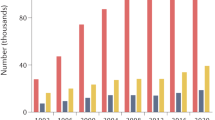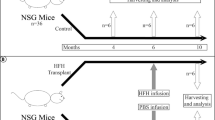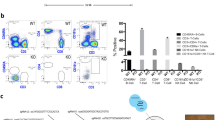Abstract
The transplantation of organs between individuals of a species normally has two main consequences: (1) the tissue is rejected unless the individuals are matched for identity of transplantation antigens, especially those encoded by the major histocompatibility complex (MHC), and (2) the recipient is sensitized to the transplantation antigens of the donor so that second-set grafts are rejected in a more violent manner1. These rules of transplantation are not obeyed by liver grafts. Orthotopic transplants of liver are never rejected by many strains of rat even though the MHC barrier is crossed2. We have recently shown that instead of sensitizing the recipient, these enduring liver grafts induce a state of donor-specific unresponsiveness in which subsequent grafts of other organs, such as skin, are accepted permanently. It is possible that many strains simply cannot mount a sufficiently vigorous destructive immune response to outstrip the liver's great capacity to repair immune damage and that the systemic unresponsiveness observed is due to diversion of alloreactive lymphocytes with donor specificity into the liver allograft. Manipulations which increase the vigour of the immune response might therefore tip the balance in favour of liver graft rejection and away from induction of unresponsiveness. We have previously measured the degree to which the immune response can be increased by previous exposure to MHC antigens in a quantitative adoptive transfer system3. In the strain combination DA (MHC haplotype RT-1a) grafted to PVG (RT-1c), the lymphocytes of immunized animals are 1,000 times more potent than those of non-immune animals in procuring graft destruction when transferred to irradiated hosts. Unexpectedly, we have now found that liver grafts transplanted into previously immunized rats not only fail to reject but convert the state of heightened reactivity to donor grafts characteristic of immune recipients into one of non-reactivity characteristic of tolerant animals.
This is a preview of subscription content, access via your institution
Access options
Subscribe to this journal
Receive 51 print issues and online access
$199.00 per year
only $3.90 per issue
Buy this article
- Purchase on Springer Link
- Instant access to full article PDF
Prices may be subject to local taxes which are calculated during checkout
Similar content being viewed by others
References
Billingham, R. E., Brent, L. & Medawar, P. B. Proc. R. Soc. B 143, 58–60 (1954).
Kamada, N., Brons, G. & Davies, H.ff.S. Transplantation 29, 429–431 (1980).
Hall, B. M., Dorsch, S. E. & Roser, B. Transplantation 26, 357–359 (1978); J. exp. Med. 148, 878–890, 891–903 (1978).
Kamada, N. & Calne, R. Y. Transplantation 28, 47–50 (1979).
Calne, R. Y. et al. Nature 233, 472–476 (1969).
Kamada, N., Davies, H.ff.S. & Roser, B. Transplant. Proc. 13, 837–841 (1981).
Bowen, J. E. et al. Transplantation 18, 322–327 (1974).
Kawamura, H., Mullen, Y. & Hildermann, W. H. Transplantation 30, 302–307 (1980).
Kawamura, H. et al. Transplant. Proc. 13, 114–116 (1981).
Homan, W. P. et al. Transplantation 29, 361–366 (1980).
Author information
Authors and Affiliations
Rights and permissions
About this article
Cite this article
Kamada, N., Davies, H. & Roser, B. Reversal of transplantation immunity by liver grafting. Nature 292, 840–842 (1981). https://doi.org/10.1038/292840a0
Received:
Accepted:
Issue Date:
DOI: https://doi.org/10.1038/292840a0
This article is cited by
-
Understanding, predicting and achieving liver transplant tolerance: from bench to bedside
Nature Reviews Gastroenterology & Hepatology (2020)
-
Two phase kinetics of the inflammatory response from hepatocyte-peripheral blood mononuclear cell interactions
Scientific Reports (2019)
-
Presentation of hepatocellular antigens
Cellular & Molecular Immunology (2016)
-
Immunotherapy for liver tumors: present status and future prospects
Journal of Biomedical Science (2009)
Comments
By submitting a comment you agree to abide by our Terms and Community Guidelines. If you find something abusive or that does not comply with our terms or guidelines please flag it as inappropriate.



